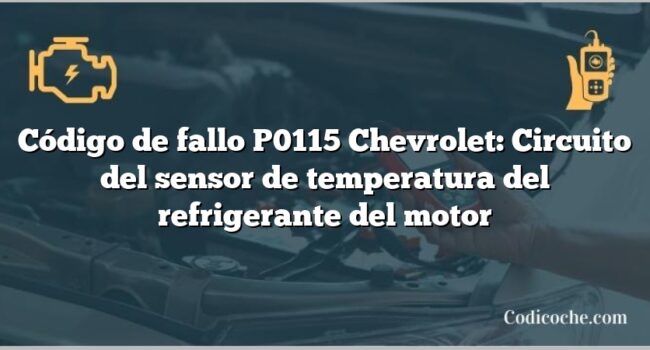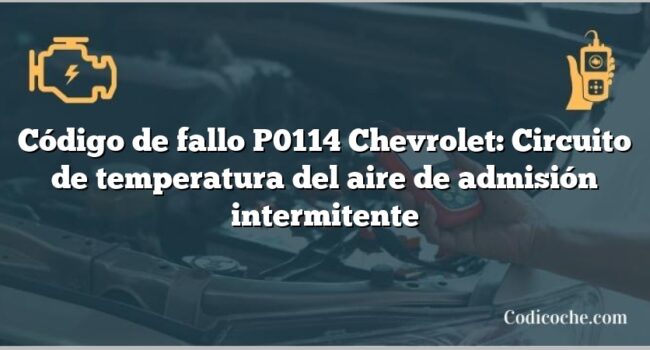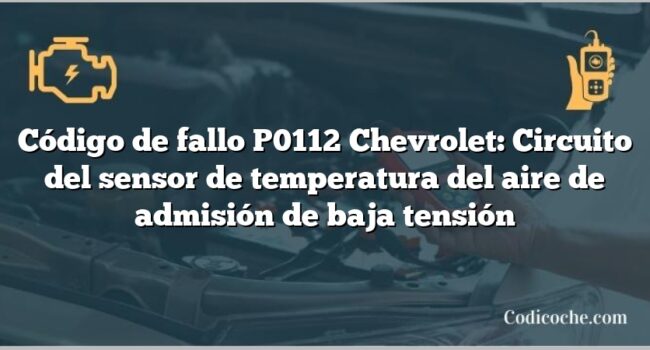
If your Chevrolet's onboard computer is flashing the C12F8 fault code, it means the brake pedal position sensor 3 has sent an implausible signal, compromising your vehicle's braking performance and safety.
You may notice irregular brake pedal feel, decreased braking performance, or the Anti-Lock Brake System (ABS) warning light turning on.
Common causes include a faulty brake pedal position sensor, sensor circuit issues, or electrical connection problems.
To diagnose the issue, you'll need to inspect the wiring harness, check the sensor circuit, and use a diagnostic tool to scan for trouble codes.
From here, you can explore how to repair and prevent this issue in the future.
- Key Takeaways
- Symptoms of the C12F8 Chevrolet Code in Chevrolet Vehicles
- Common Causes of the C12F8 Chevrolet Code: A Diagnostic Overview
- How to Diagnose the C12F8 Chevrolet Code: Step-by-Step Procedure
- Effective Solutions: Repairing the C12F8 Chevrolet Code
- Cost Analysis and Essencial Tools for Resolving the C12F8 Chevrolet Code
- Preventive Measures to Avoid the C12F8 Chevrolet Code in the Future
- Chevrolet Models Most Affected by the C12F8 Chevrolet Code
- Related Fault Codes to C12F8 Chevrolet Code
- Frequently Asked Questions
- Conclusion
Key Takeaways
- The C12F8 Chevrolet code indicates a faulty brake pedal position sensor 3, affecting brake performance and stability control systems.
- Common causes include a malfunctioning sensor, sensor circuit issues, electrical connection problems, or a faulty Electronic Brake Control Module (EBCM).
- To diagnose, visually inspect the wiring harness and connectors, check the sensor circuit, and use a scan tool to monitor the brake system.
- Repairing the issue may involve replacing the faulty sensor or EBCM, and performing a thorough brake system maintenance to prevent future problems.
- The C12F8 code is commonly seen in Chevrolet models such as the 2014-2019 Silverado 1500, 2015-2020 Tahoe, and 2016-2020 Camaro.
Symptoms of the C12F8 Chevrolet Code in Chevrolet Vehicles
When your Chevrolet vehicle's Anti-Lock Brake System (ABS) Warning Light suddenly illuminates on your dashboard, it's a clear indication that the C12F8 code has been triggered, putting your safety at risk due to a malfunction in the brake system. This code is often accompanied by other warning lights, such as the Engine Light or Service Engine Soon Warning Light, which suggest a problem with the brake pedal position sensor.
Three key symptoms to look out for are:
- Irregular brake pedal feel or response, which can lead to unpredictable braking performance.
- Decreased braking performance, increasing the risk of accidents or collisions.
- Anti-Lock Brake System (ABS) Warning Light ON, indicating a malfunction in the brake system.
These symptoms can affect the functionality of your vehicle's Anti-Lock Brake System, Traction Control System, and Electronic Stability Control, compromising your safety on the road.
Common Causes of the C12F8 Chevrolet Code: A Diagnostic Overview
To diagnose the C12F8 Chevrolet code, you'll need to investigate a range of potential causes that can trigger this error, from faulty brake pedal position sensors to electrical connection issues.
A malfunctioning brake pedal position sensor can send incorrect signals to the Electronic Brake Control Module (EBCM), leading to the C12F8 code.
Sensor circuit issues, such as open or shorted connections, can also trigger the code.
In some cases, the EBCM itself may be faulty, causing the code to appear.
How to Diagnose the C12F8 Chevrolet Code: Step-by-Step Procedure
Review the possible causes of the C12F8 code and visually examine the corresponding wiring harness and connectors to identify any signs of damage or corrosion. This will help you narrow down the issue and create a plan for diagnosis.
Check the Brake Pedal Position Sensor circuit for poor electrical connections or signs of damage.
Inspect the Electronic Brake Control Module (EBCM) for any faults or issues.
Use a diagnostic tool to scan for trouble codes and monitor the Brake Assist and StabiliTrak systems.
Effective Solutions: Repairing the C12F8 Chevrolet Code
Get to the root of the C12F8 code by pinpointing the faulty component, whether it's the Brake Pedal Position Sensor, its harness, or the Electronic Brake Control Module (EBCM), and then take corrective action.
To effectively repair the code, follow these steps:
- Visually inspect the wiring harness and connectors for damage or corrosion.
- Check the Brake Pedal Position Sensor circuit for poor electrical connections or short circuits.
- Consult factory service manuals for specific guidance on diagnosing and repairing the issue.
Cost Analysis and Essencial Tools for Resolving the C12F8 Chevrolet Code
You'll need to budget at least an hour of labor, costing between $75 and $150, to diagnose the C12F8 code, depending on your location and vehicle type. This diagnosis time may vary, but prompt resolution is crucial, as it affects your vehicle's electronic brake control system.
To resolve the C12F8 code, you'll need the following essential tools:
Scan tool: to read the trouble code, view live data, and perform bi-directional controls.
Wiring diagram and factory service manual: to access detailed information on the brake pedal position sensor circuit and troubleshooting procedures.
Multimeter: to perform voltage and resistance tests on the brake pedal position sensor circuit to identify electrical issues.
With these tools and a thorough understanding of the diagnostic procedure, you'll be able to identify and fix the root cause of the C12F8 code, ensuring your vehicle's brake control module functions correctly.
Preventive Measures to Avoid the C12F8 Chevrolet Code in the Future
By resolving the C12F8 code and addressing the underlying issues, you've taken a significant step in maintaining your vehicle's electronic brake control system, and now it's time to focus on preventive measures to avoid this code from appearing again in the future.
To guarantee your brake system remains in top condition, follow these preventive measures:
- Regular brake system maintenance: Schedule regular checks to inspect the brake pedal position sensor, brake hydraulic and assist, and brake modulator for signs of wear or damage.
- Pedal position sensor learn: Perform the pedal position sensor learn procedure as recommended by the manufacturer to guarantee accurate sensor readings.
- Diagnostic procedure: Familiarize yourself with the diagnostic procedure for the C12F8 code to quickly identify and address any issues that may arise in the future.
Chevrolet Models Most Affected by the C12F8 Chevrolet Code
Frequently, the C12F8 code pops up in certain Chevrolet models, which are more prone to brake pedal position sensor issues due to various factors. If you own one of these models, it's crucial to be aware of the potential risks and take proactive measures.
The models that are commonly affected include:
2014-2019 Silverado 1500: This model is commonly plagued by brake pedal position sensor issues, leading to the C12F8 code.
2015-2020 Tahoe: The Tahoe is another model that's prone to sensor circuit problems, which can trigger the C12F8 code.
2016-2020 Camaro: The Camaro is also susceptible to electronic brake control module malfunctions, resulting in the C12F8 code.
These models are more likely to experience brake pedal position sensor issues due to wear and tear, corrosion, or manufacturing defects, which can lead to ABS malfunction and reduced vehicle safety.
While addressing the C12F8 code in your Chevrolet, it's also important to be aware of other related fault codes that may be triggered by similar issues, such as faulty brake pedal position sensors or electronic brake control module malfunctions.
These codes can provide valuable insights into the underlying problems affecting your vehicle's brake system.
C120A: This code indicates a problem with the brake pedal position sensor 1 circuit.
C121B: This code signals an issue with the electronic brake control module (EBCM) internal fault.
C1227: This code points to a problem with the brake control module monitors, which track the driver's braking intent.
Frequently Asked Questions
How Much Does It Cost to Replace a Brake Pedal Position Sensor?
The cost of replacing a brake pedal position sensor varies depending on the quality of the sensor and labor costs.
OEM sensors typically cost between $50-$200, while aftermarket options can range from $20-$100. Labor costs range from $75 to $150 per hour, depending on location and vehicle type.
As a DIY task, replacing the sensor is moderately difficult. However, if you're still under warranty, labor costs may be covered. Regular sensor maintenance can help extend its lifespan, and upgrading to a high-quality sensor can guarantee peak performance.
The total cost of replacement can range from $100 to $500, depending on the sensor quality and labor costs. It's essential to consider these factors when deciding to replace your brake pedal position sensor.
What Happens When the Brake Pedal Position Sensor Fails?
When the brake pedal position sensor fails, it can cause brake failure, leading to accidents.
Signs of sensor malfunction include pedal erratic behavior, sudden brake engagement, and unstable brake response.
You may experience false brake activation, intermittent brake issues, or brake light illumination. The ABS system may activate erratically, and the brake feel will be inconsistent.
Prompt attention to these issues is crucial to verify and address the problem, ensuring your safety on the road.
Where Is the Brake Pedal Position Sensor Located?
The brake pedal position sensor is typically mounted on the brake pedal assembly, near the pedal pivot point.
The sensor is usually connected to the wiring harness, which routes to the Electronic Brake Control Module (EBCM).
The electrical connector type and sensor adjustment process may vary depending on the brake pedal design and pedal travel limit, so understanding the pedal assembly layout and brake light circuit is vital for proper sensor installation and pedal feel adjustment.
What Type of Sensor Is a Brake Pedal Position Sensor?
A brake pedal position sensor is a multi-position sensor that combines different sensor types, such as potentiometers, mechanical switches, and analog signals with digital outputs.
These sensors use various materials and electronic circuits to detect the brake pedal's position, sending signals to the Electronic Brake Control Module (EBCM) for processing.
Sensor calibration is vital to guarantee precision, and wiring diagrams help technicians understand the signal processing flow.
Conclusion
You now have a thorough understanding of the symptoms, causes, and solutions for the Fault Code C12F8 in your Chevrolet. This knowledge will enable you to address the issue and get your vehicle back on the road.
Regular maintenance is crucial to prevent future occurrences of this fault code. Staying vigilant and proactive will ensure a safe and reliable driving experience.
By following the guidelines outlined, you'll be well on your way to resolving the C12F8 Chevrolet Code.
Si quieres conocer otros artículos parecidos a Fault Code C12F8 Chevrolet: Brake Pedal Position Sensor 3 Not Plausible puedes visitar la categoría Chevrolet.























También te puede interesar: